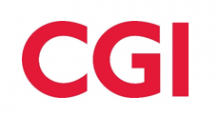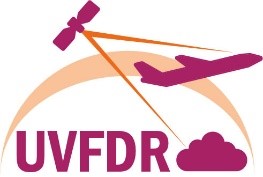
Objectives of the service
The UVFDR is a cloud-based data storage facility available to any aircraft capable of sending flight data to a ground-based data repository in near real time. UVFDR provides secure storage, authentication and provenance control of the transmitted data including global aircraft tracking functions with GADSS (Global Aeronautical Distress and Safety System) Distress Tracking and detection/alerting of potentially unsafe situations.
ICAO (International Civil Aviation Organization) compliant flight data recording solutions available in the market require the recovery of the physical recorder memory. Data transmission systems for quick access recorder data are designed to send data through terrestrial networks after an aircraft lands at its destination (or after the aircraft returns to its home base).
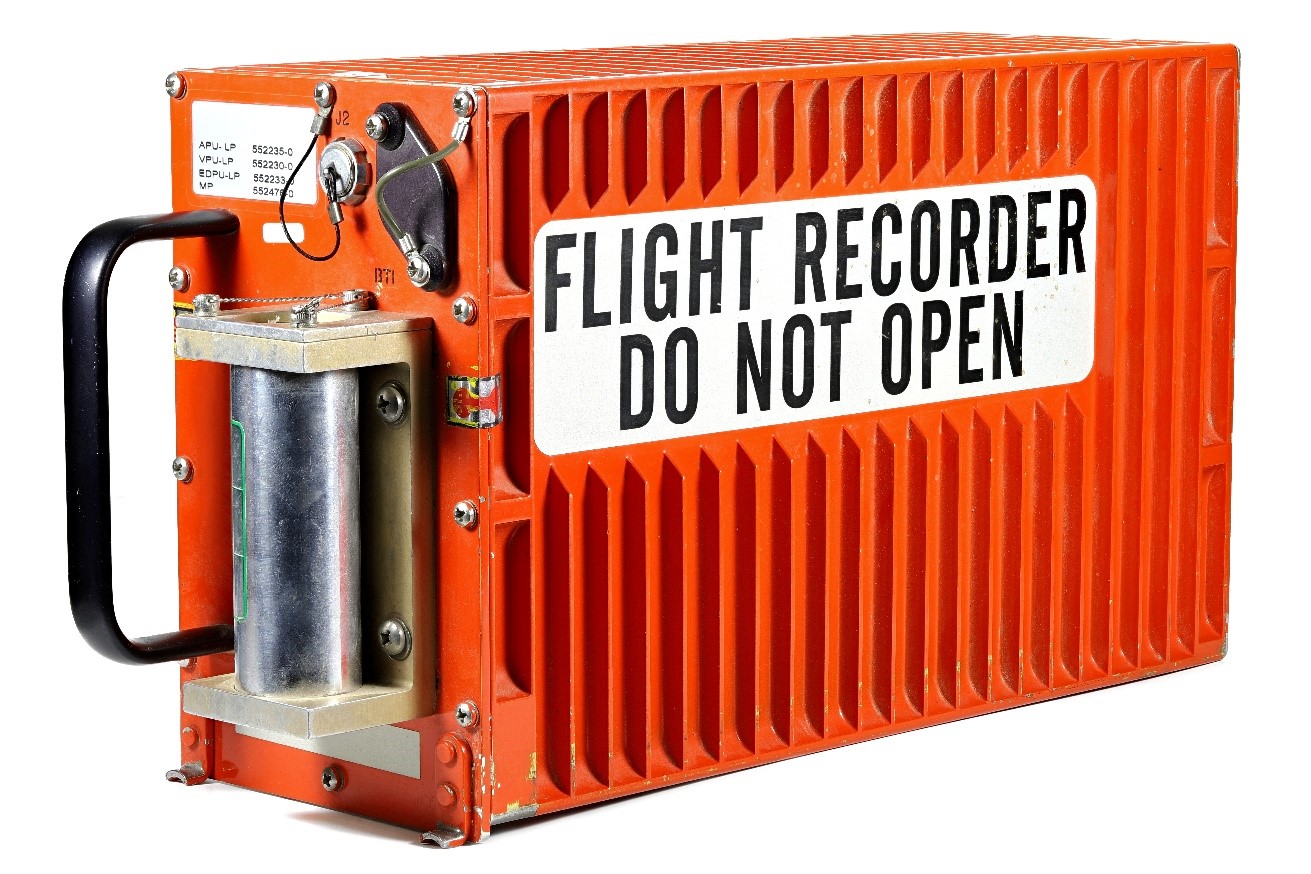
Aircraft equipped with solutions capable of transmitting data in real-time can subscribe to the UVFDR service for compliance with GADSS provisions. In the event of an incident subject to investigation, the UVFDR provides immediate access to data for authorised users. The secure and assured storage allows independent verification of the data’s truthfulness. It can therefore be trusted and even serve as independent verification of other evidence in an investigation. The non-proprietary solution allows all authorised parties to analyse flight data immediately, without access to the physical aircraft.
Users and their needs
Aviation’s unprecedented level of safety is achieved, in part, through the meticulous investigation of every incident and accident. To that end, flight data is recorded on a crash protected memory from the moment an aeroplane is powered up to the moment it is powered down. The system is commonly known as the “Black Box”, or the Flight Data Recorder and has been in use for many decades. However, data isn’t always recoverable.
Following a number of high-profile accidents over the past 15 years, regulators have introduced mandates for technologies enabling the global tracking of aircraft, especially in distress, and the timely recovery of flight data.
Targeted users of the UVFDR service are aircraft operators and air accident investigators. Aircraft operators can subscribe to certified UVFDR services through an aviation data service provider. Potential service providers include Data Link Service Providers, Flight Operations Quality Assurance service providers, or a government agency. Air accident investigators can access the certified UVFDR data repository directly upon authorisation following an air accident or incident requiring investigation.
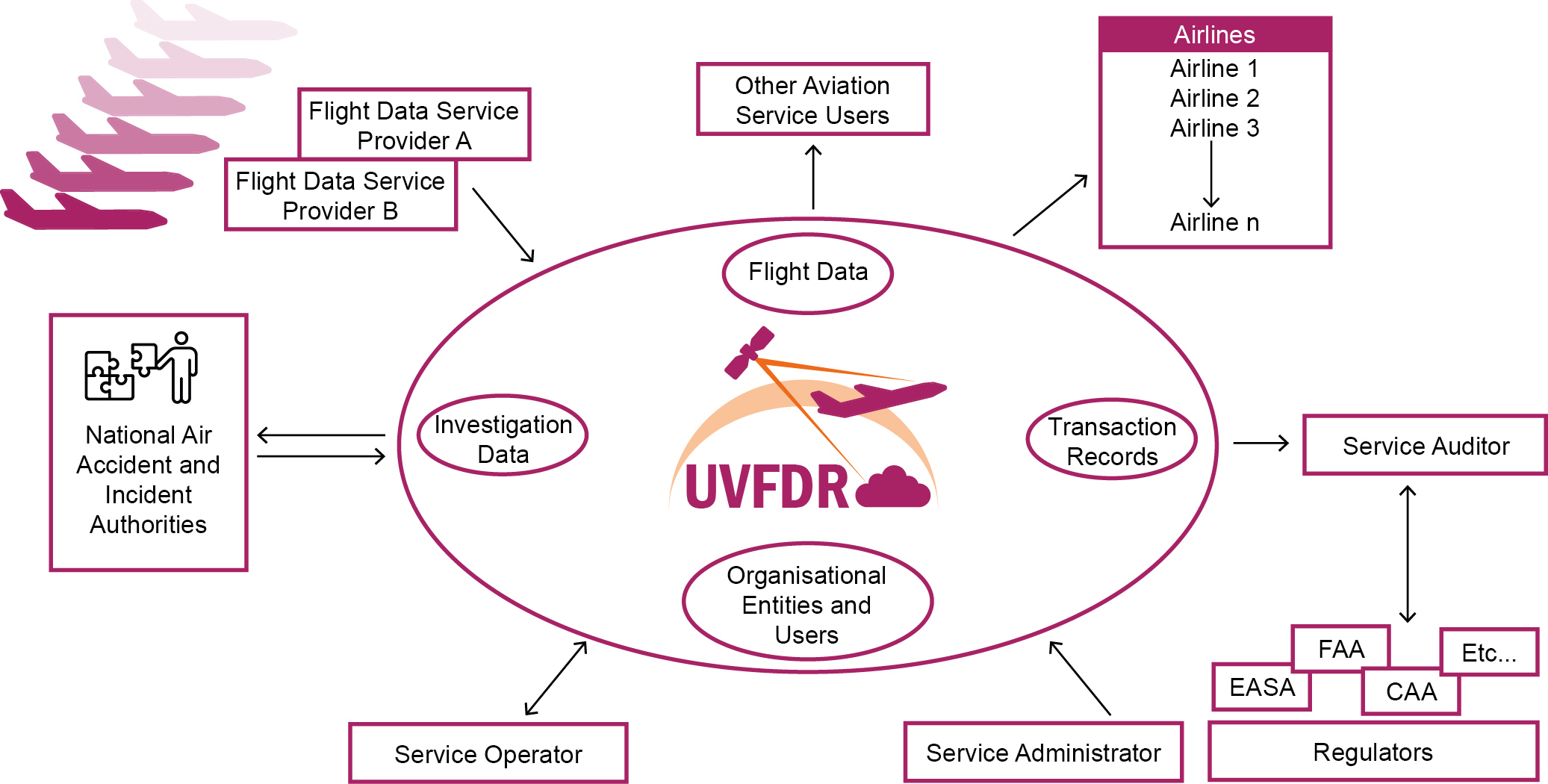
Service/ system concept
Following public pressure in the wake of recent incidents and accidents, ICAO (International Civil Aviation Organization), IATA (International Air Transport Association), and other organisations defined
Global Aeronautic Distress and Safety System (GADSS) requirements and related, global mandates. To meet these evolving requirements
-
Critical aircraft flight data shall be sent through a satellite data communication link to a cloud-based storage location on the ground.
-
On the ground, aircraft flight data can be provenance controlled and monitored, and stored in a secure and assured cloud service.
In doing so, the UVFDR service offers compliance with GADSS timely recovery of flight data, global aircraft tracking, distress tracking, and distress triggering requirements.
Through its monitoring function, the UVFDR also enables new possibilities of reducing pilot workload when operating in a distressed state.
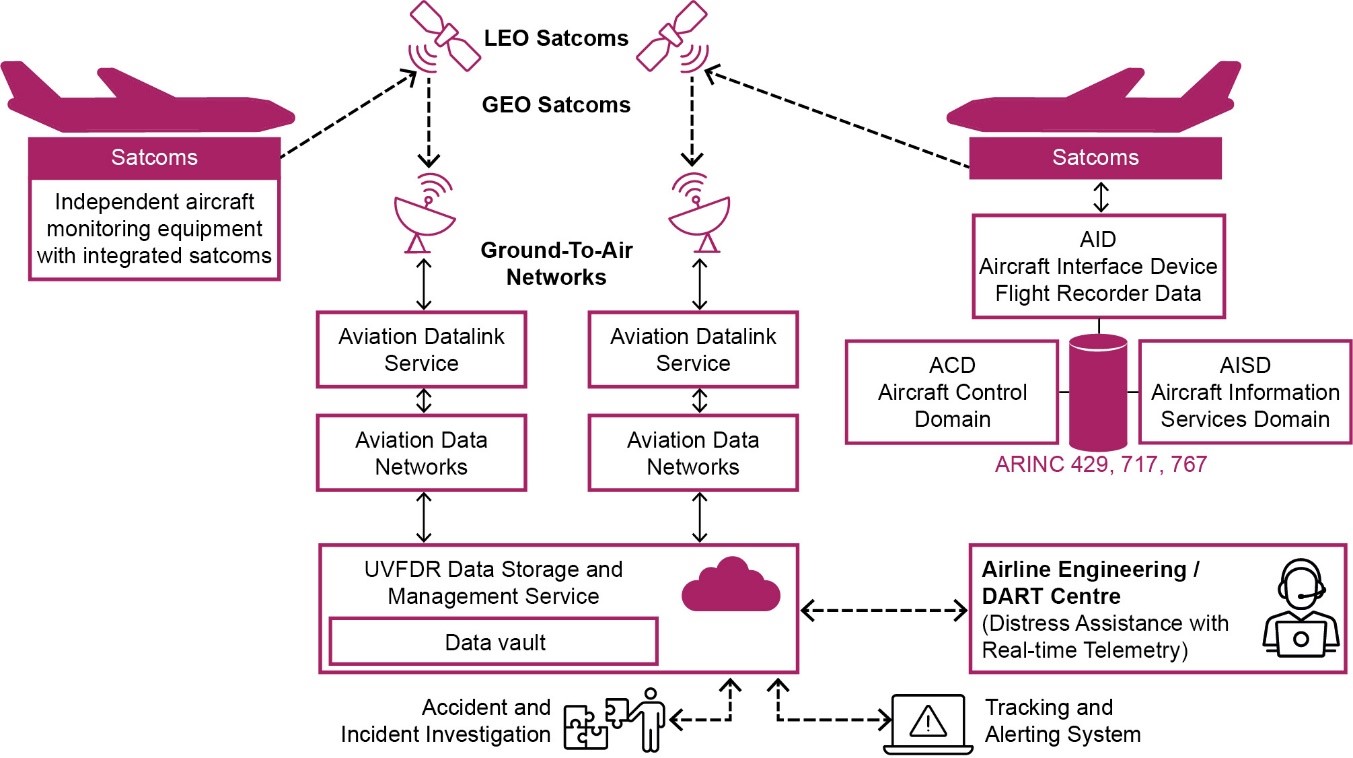
Space Added Value
Satellite communications is the key enabler of the solution. To enable economical monitoring of a large fleet of aircraft, the UVFDR solution will be able to incorporate techniques developed for satellite telemetry monitoring to allow a relatively small number of people to monitor the health of many aircraft. Not only does it offer scalability but satellite communications are proven to be secure, boast global coverage of most of the routes, offer 24/7 service and have a limited need for retrofit. With additional satellite communications bandwidth becoming available over the next ten years transmission-based compliance solutions are increasingly viable. Because data transmitted in near real-time has operational benefits, along with enabling new ways of relieving pilot workload by way of remote engineering assistance, the transmission of flight data becomes more desirable than deployable memory modules.
It is not economically feasible to use exclusively terrestrial networks for a global aviation data network with sufficient bandwidth to transmit flight data near real time. Additionally they are constrained on coverage in remote areas and at specific altitudes, however they may be used in a hybrid communication solution to gain access to additional bandwidth where available.
Current Status
CGI have successfully completed the original contract phase of the UVFDR project. This work has concluded that a practical virtual flight recorder service can be built and demonstrated its use in a first deployment with two commercial passenger airliners registered with the service. The project team wase also able to demonstrate that the technological challenges identified by EASA in their QR-FRD study can be met.
Going forward, it is still required to demonstrate the system’s ability to cope with outages caused by flight attitudes so unusual that they might temporarily break the satcom link. This will be investigated in an extension of the contract which kicked off in Jan 2025. In addition to this, the system needs to be scalable so that a large number of users can be onboarded within a reasonable timeframe and effort. These efforts will lead to the creation of a minimum viable product ready for commercial service introduction by the end of 2025.
Use cases and requirements have been updated and baselined in accordance with the MVP objectives of the contract extension, presented at Design Reviews. Recently the new functionality has completed its Factory Testing campaign successfully, ahead of the system testing and Pilot start In Oct 2025.

Prime Contractor(s)
Subcontractor(s)




